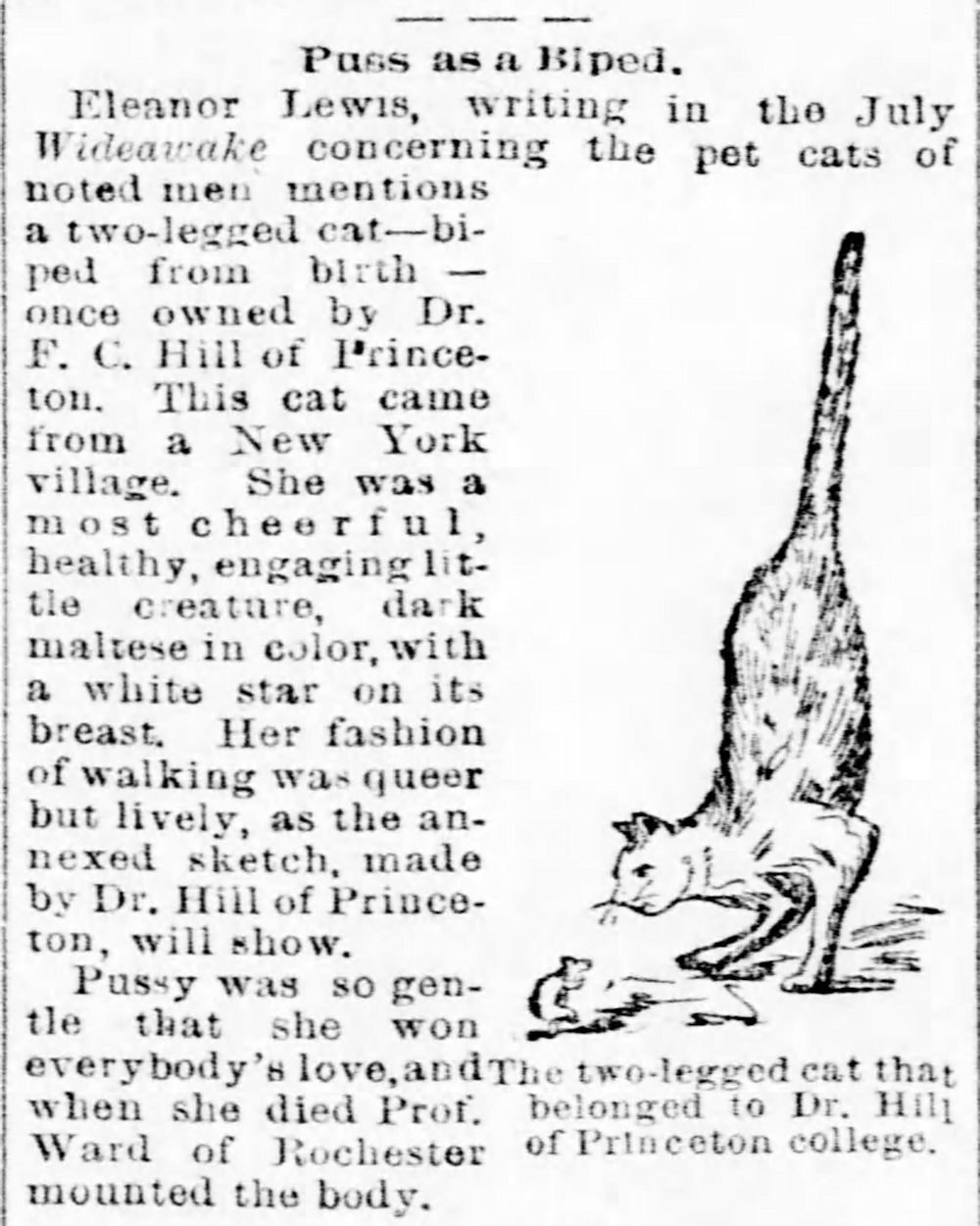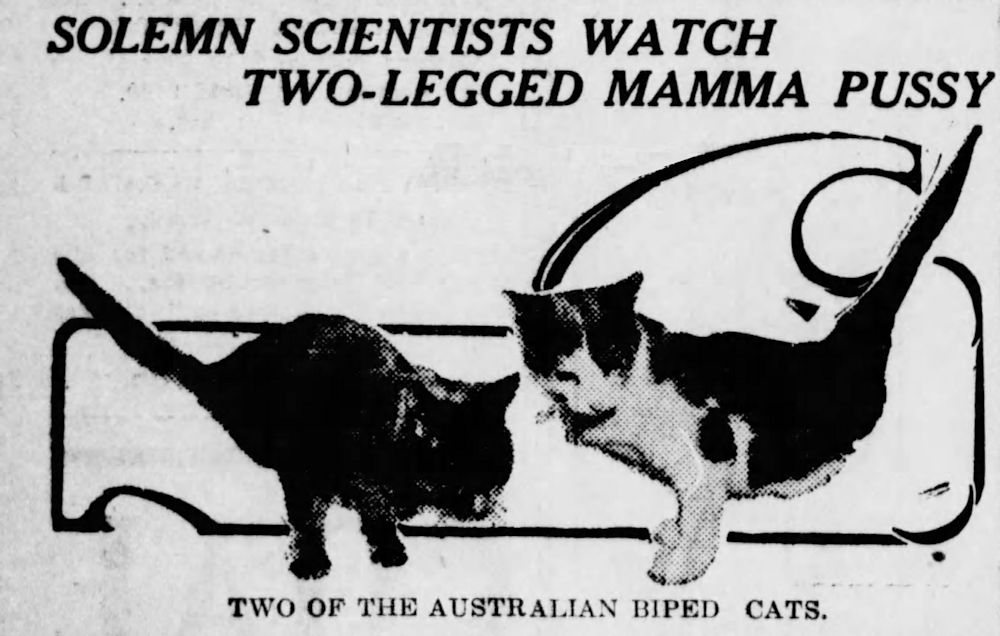
BIPED CATS
BIPEDAL CATS
In modern time, cats that have adapted to missing both hind-legs or both forelegs appear on YouTube, Facebook and other social network sites. These days, many can be helped by providing “cat wheelchairs” to give the cat some semblance of normal motion and to take the strain off of its back. But back before the internet or feline disability aids, when the only forms of social media were gossip and newspapers, two-legged cats were already a curiosity.

The first reports I could find were dated 1873 and 1891. The reference to Barnum, a famous animal exhibitor and menagerie owner, shows that attitudes were very different – why not exhibit the cat as a curiosity?
BIPED CAT - Poughkeepsie Journal, November 30, 1873.
There is a lady living in the upper part of this village who has a biped cat, which is quite a curiosity. It is very lively, jumping about as if it had been provided with a full complement of limbs. It is also an excellent ratter and a great pet with its owner. Where’s Barnum?PUSS AS A BIPED – Pittsburgh Daily Post, July 18, 1891.
Eleanor Lewis, writing in the July ‘Wideawake’ concerning the pet cats of noted men mentions a two-legged cat – biped from birth – once owned by D. F.C. Hill of Princeton. This cat came from a New York village. She was a most cheerful, healthy, engaging little creature, dark maltese in color, with a white star on her breast. Her fashion of walking was queer but lively, as the annexed sketch, made by Dr. Hill of Princeton, will show. Pussy was so gentle that she won everybody’s love, and when she died, Prof. Ward of Rochester mounted the body.
SOLEMN SCIENTISTS WATCH TWO-LEGGED MAMMA PUSSY - The Spokane Press, March 18, 1909

Australia the country of natural freaks, has developed what may prove to be a new species of cats. Mrs. Helen Reineger, the wife of a farmer residing near Sidney, Australia, owned a blue maltese female cat. The feline presented the farmer's household with three litters of two-legged kittens. The diminutive furry balls mewed, played, jumped about and frisked like other young cats. They even climbed trees and chased mice. But their movements were not as swift as their quadruped relatives.
A foreman on the farm thought two-legged cats were unfit to survive, and he drowned the first two litters. He also killed three of the last litter. Mrs. Relueger ordered two of the kittens spared to “see if she could raise them.” They are now 10 months old and full grown. The queer animals mated and the female will soon demonstrate, by giving birth to a litter of kittens, whether a new species of cat has been suddenly evolved contrary to the slow laws of evolution, or if she will “breed mack and her brood revert to type,” or four-legged cats.
The cats are now in the possession of M. Slotkin, an importer, 386 Madison street, Chicago. He heard of Mrs. Reineger’s freak pets and made her an offer of $100 for them, this was accepted.
Shipment across Australia, over the sea to Bremen, Germany, thence across to New York and finally to Chicago, with incidental expenses of feeding and care, cost $50 more. Almost immediately on their arrival here bids were made for the cats by zoologists and showmen all over the world.
The advent of the coming litter is watched with deep interest by naturalists as a possible demonstration of departure from the laws of evolution which may upset Darwin’s theory of gradual change or verify his proposition that freaks are exceptions that forecast future species and are followed by reversions to normal type. The possibilities give rise to many novel and sensational scientific theories.
Modern cases, and how to properly care for them, are mentioned on the Messybeast webpage devoted to living with disabled cats.